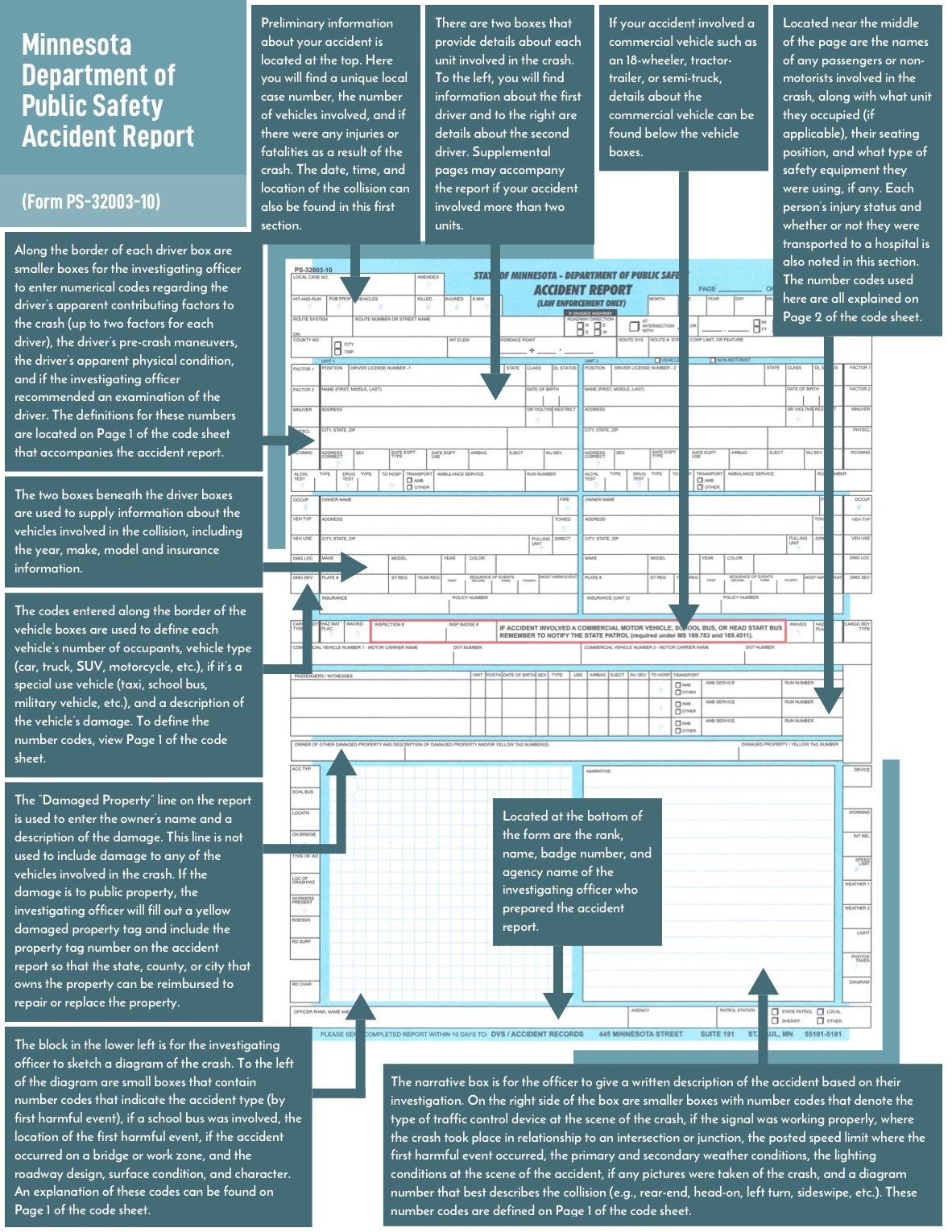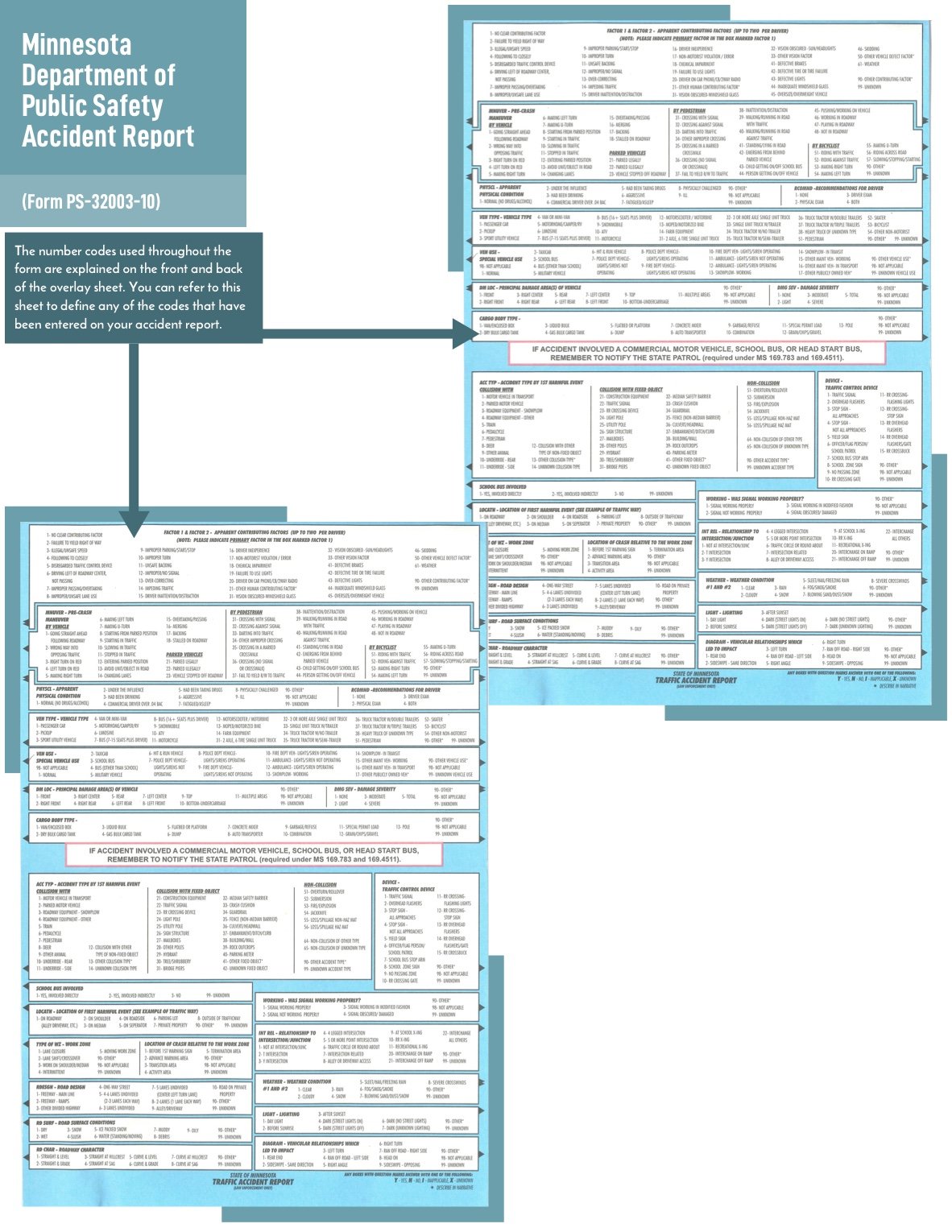In a divorce, the laws of equitable distribution distinguish marital property from separate property. Technically, only marital property, that is, proper...
In Minnesota, you must immediately notify the nearest law enforcement agency if you’re involved in a car accident that causes more than $1,000 of apparent property damage or results in someone’s personal injury or death. After police secure the crash scene and gather all the necessary information, an accident report will be generated by the investigating officer. This official document is called the Minnesota Department of Public Safety Accident Report (Form PS-32003-10) and functions as an important piece of evidence when trying to prove responsibility for a crash.
Minnesota follows a no-fault system when it comes to car accidents, meaning you turn to your own insurance policy and personal injury protection coverage (PIP) first to cover some of your losses. Yet if your damages exceed insurance policy limits or your injuries meet certain qualifications, you may step outside the no-fault system to pursue compensation from the at-fault party.
Furthermore, Minnesota is a comparative negligence state. That means you legally can’t be more than 50% at fault to recover compensation from another party. Any compensation you’re awarded through a negotiated settlement or court verdict will also be reduced by the same percentage of fault that you’re assigned for the accident. Considering that the official police accident report is often leveraged to establish fault, even one error has the potential to negatively impact your case.
You may request a copy of your accident report by completing a Minnesota Crash Record Request form and submitting it to the Department of Public Safety. If you need help obtaining your accident report or if you read it and notice something is wrong, contact a Minnesota car accident lawyer near you for help. An attorney will be able to explain your legal options and can take steps on your behalf to ensure the true version of what happened in your crash is documented correctly.
Minnesota Department of Public Safety Accident Report (Form PS-32003-10)
https://www.nhtsa.gov/sites/nhtsa.dot.gov/files/documents/mn_par_01_2003.pdf

Page 1
Preliminary information about your accident is located at the top. Here you will find a unique local case number, the number of vehicles involved, and if there were any injuries or fatalities as a result of the crash. The date, time, and location of the collision can also be found in this first section.
Click here to download a printable PDF of How to Read Your Minnesota Accident Report.
There are two boxes that provide details about each unit involved in the crash. To the left, you will find information about the first driver and to the right are details about the second driver. Supplemental pages may accompany the report if your accident involved more than two units.
Along the border of each driver box are smaller boxes for the investigating officer to enter numerical codes regarding the driver’s apparent contributing factors to the crash (up to two factors for each driver), the driver’s pre-crash maneuvers, the driver’s apparent physical condition, and if the investigating officer recommended an examination of the driver. The definitions for these numbers are located on Page 1 of the code sheet that accompanies the accident report.
The two boxes beneath the driver boxes are used to supply information about the vehicles involved in the collision, including the year, make, model and insurance information.
The codes entered along the border of the vehicle boxes are used to define each vehicle’s number of occupants, vehicle type (car, truck, SUV, motorcycle, etc.), if it’s a special use vehicle (taxi, school bus, military vehicle, etc.), and a description of the vehicle’s damage. To define the number codes, view Page 1 of the code sheet.
If your accident involved a commercial vehicle such as an 18-wheeler, tractor-trailer, or semi-truck, details about the commercial vehicle can be found below the vehicle boxes.
Located near the middle of the page are the names of any passengers or non-motorists involved in the crash, along with what unit they occupied (if applicable), their seating position, and what type of safety equipment they were using, if any. Each person’s injury status and whether they were transported to a hospital is also noted in this section. The number codes used here are all explained on Page 2 of the code sheet.
The “Damaged Property” line on the report is used to enter the owner’s name and a description of the damage. This line is not used to include damage to any of the vehicles involved in the crash. If the damage is to public property, the investigating officer will fill out a yellow damaged property tag and include the property tag number on the accident report so that the state, county, or city that owns the property can be reimbursed to repair or replace the property.
The block in the lower left is for the investigating officer to sketch a diagram of the crash. To the left of the diagram are small boxes that contain number codes that indicate the accident type (by first harmful event), if a school bus was involved, the location of the first harmful event, if the accident occurred on a bridge or work zone, and the roadway design, surface condition, and character. An explanation of these codes can be found on Page 1 of the code sheet.
The narrative box is for the officer to give a written description of the accident based on their investigation. On the right side of the box are smaller boxes with number codes that denote the type of traffic control device at the scene of the crash, if the signal was working properly, where the crash took place in relationship to an intersection or junction, the posted speed limit where the first harmful event occurred, the primary and secondary weather conditions, the lighting conditions at the scene of the accident, if any pictures were taken of the crash, and a diagram number that best describes the collision (e.g., rear-end, head-on, left turn, sideswipe, etc.). These number codes are defined on Page 1 of the code sheet.
Located at the bottom of the form are the rank, name, badge number, and agency name of the investigating officer who prepared the accident report.

Overlay (Code Sheet)
The number codes used throughout the form are explained on the front and back of the overlay sheet. You can refer to this sheet to define any of the codes that have been entered on your accident report.





